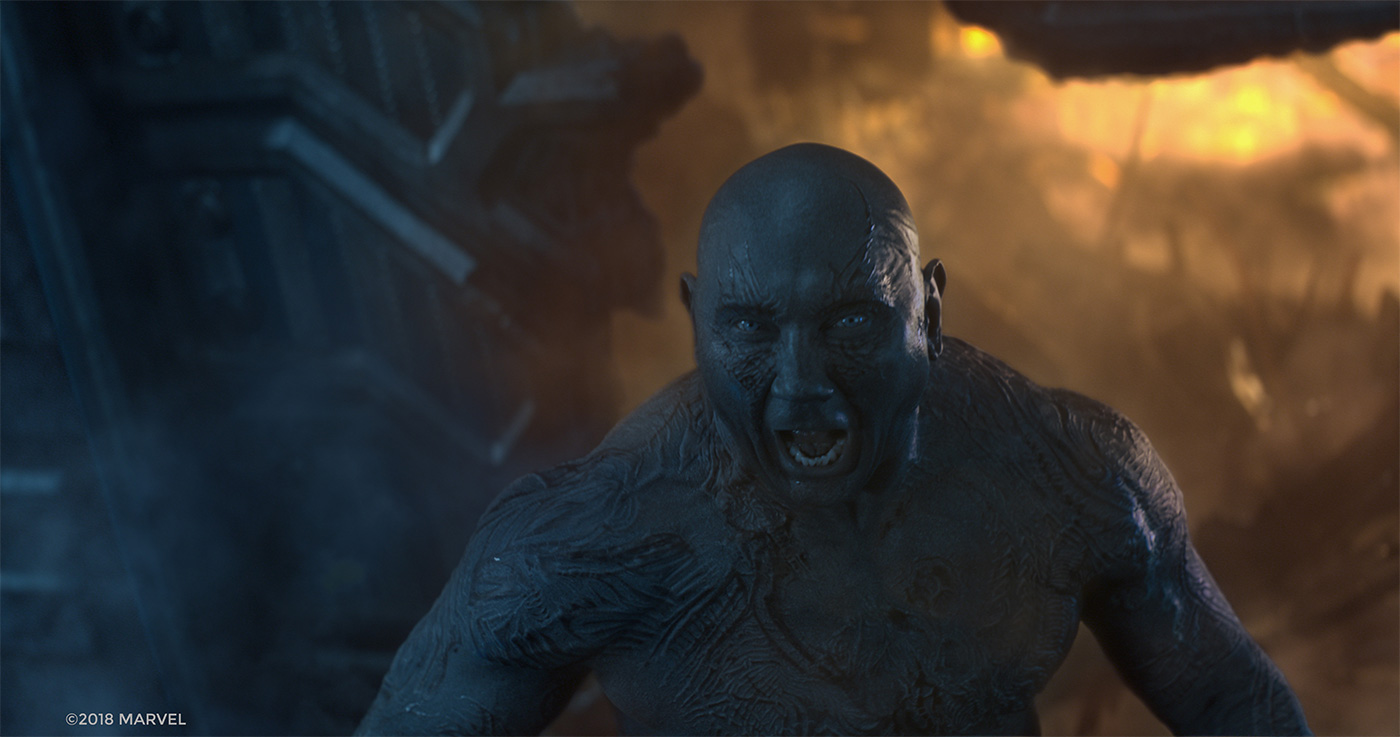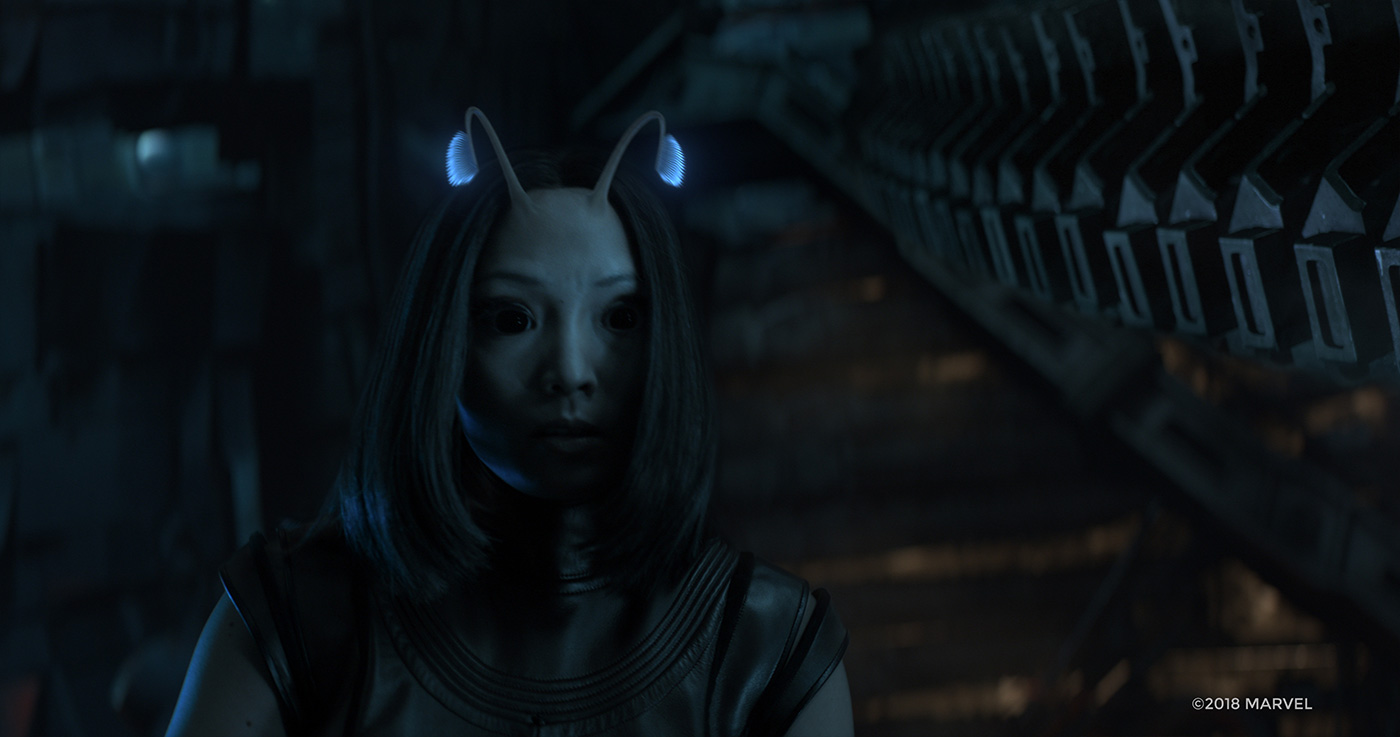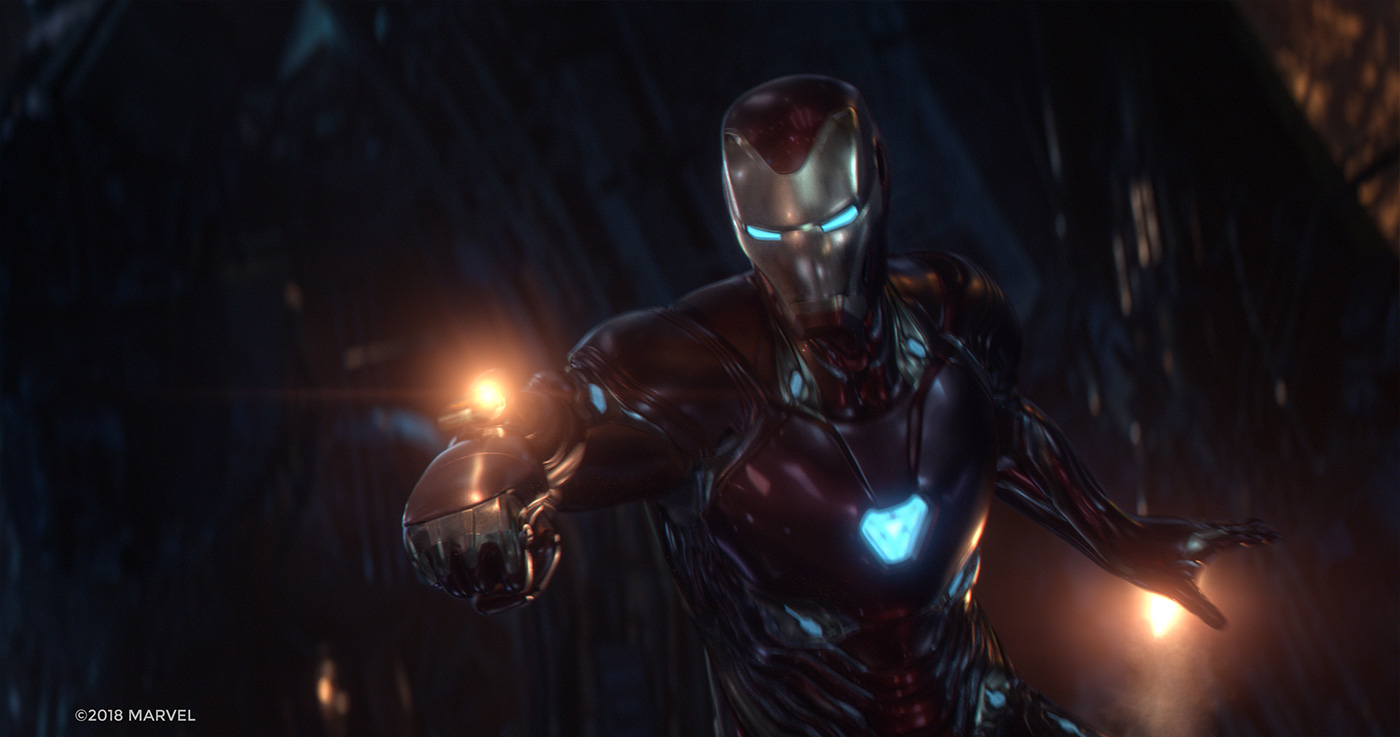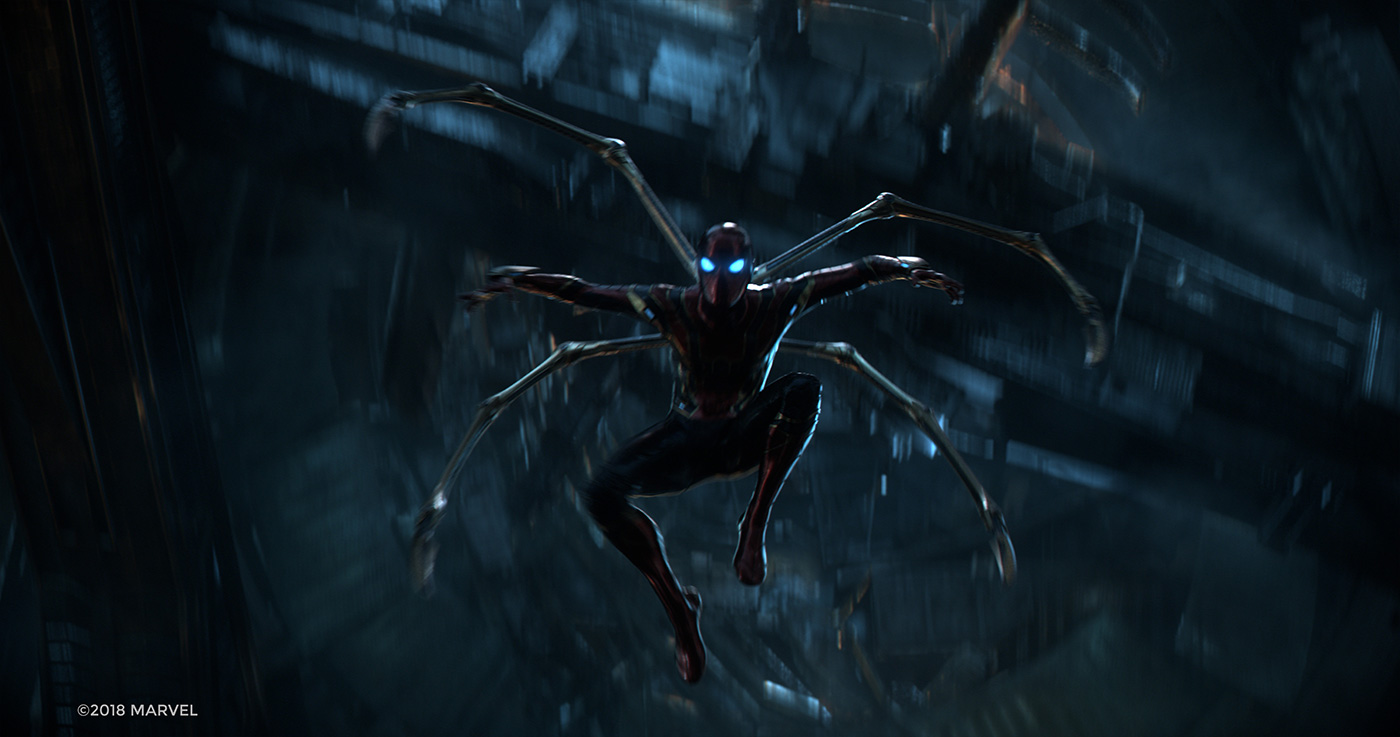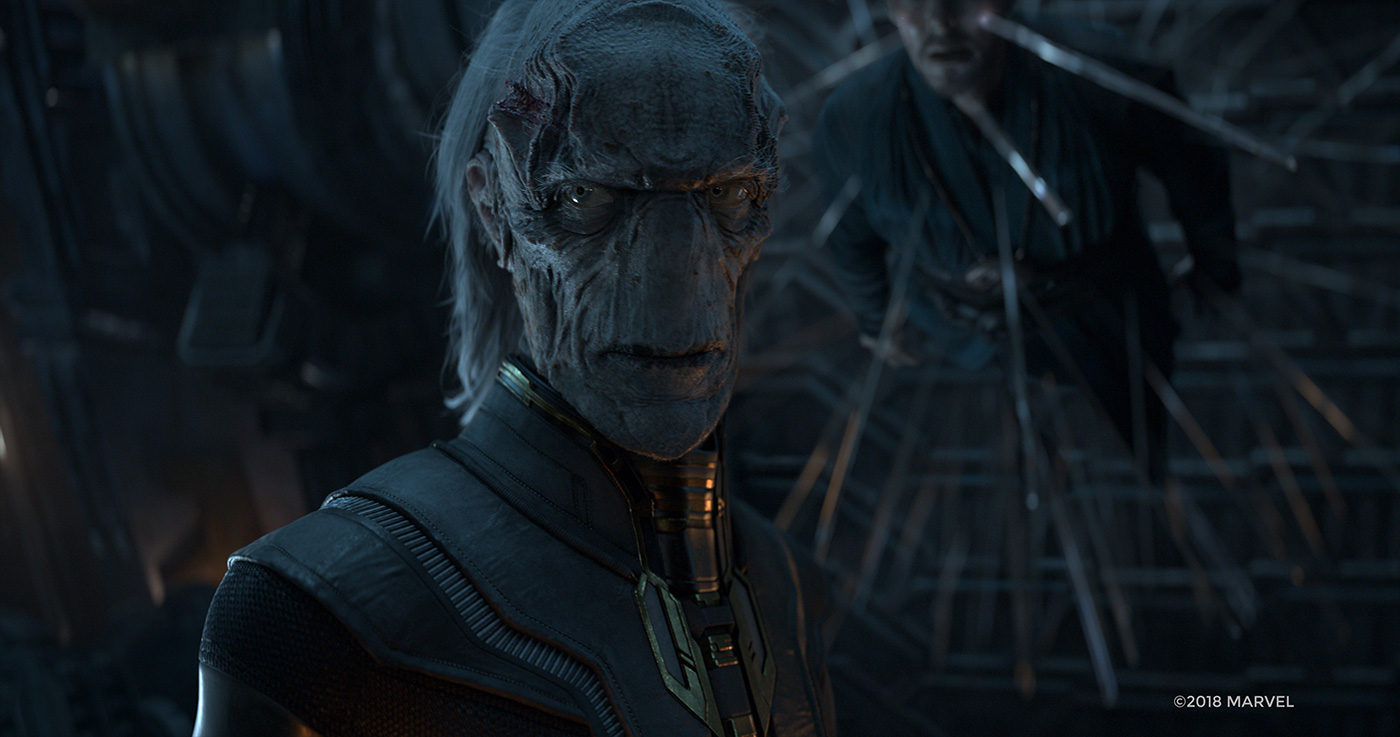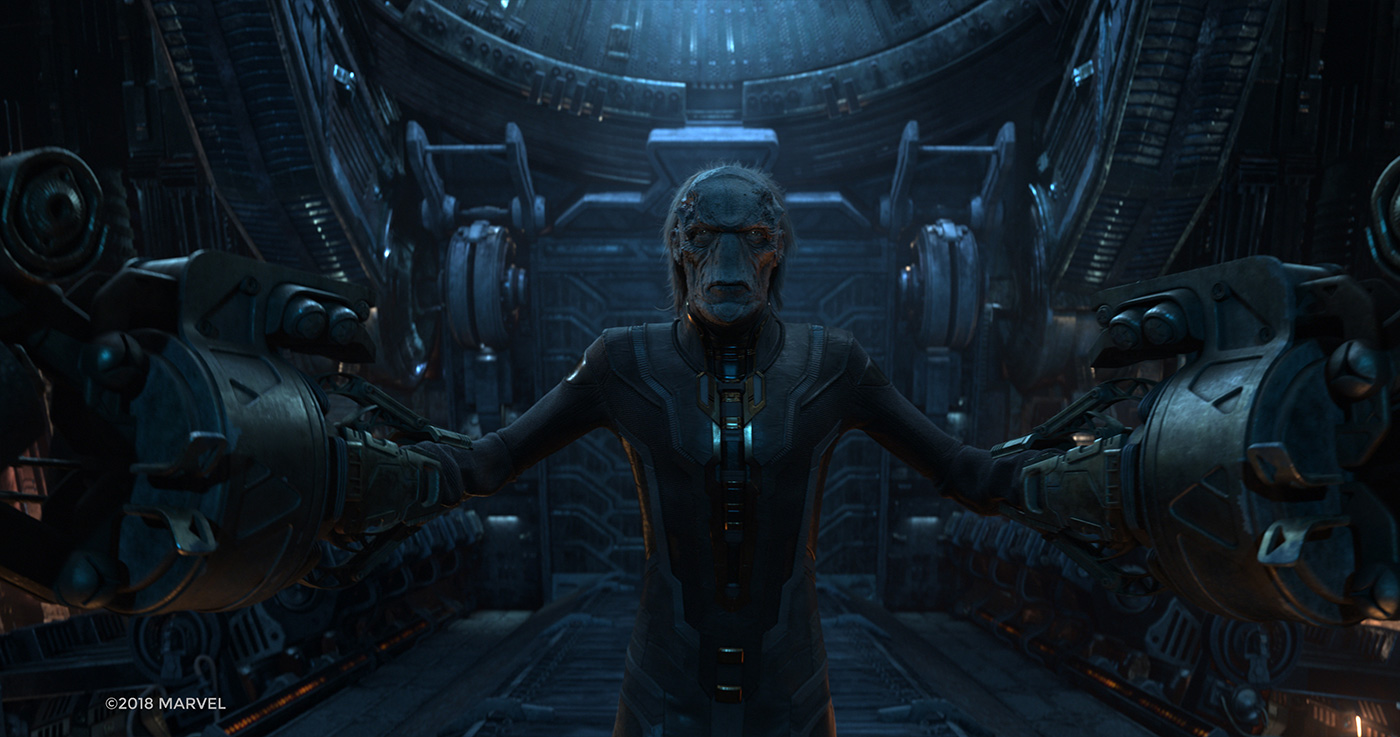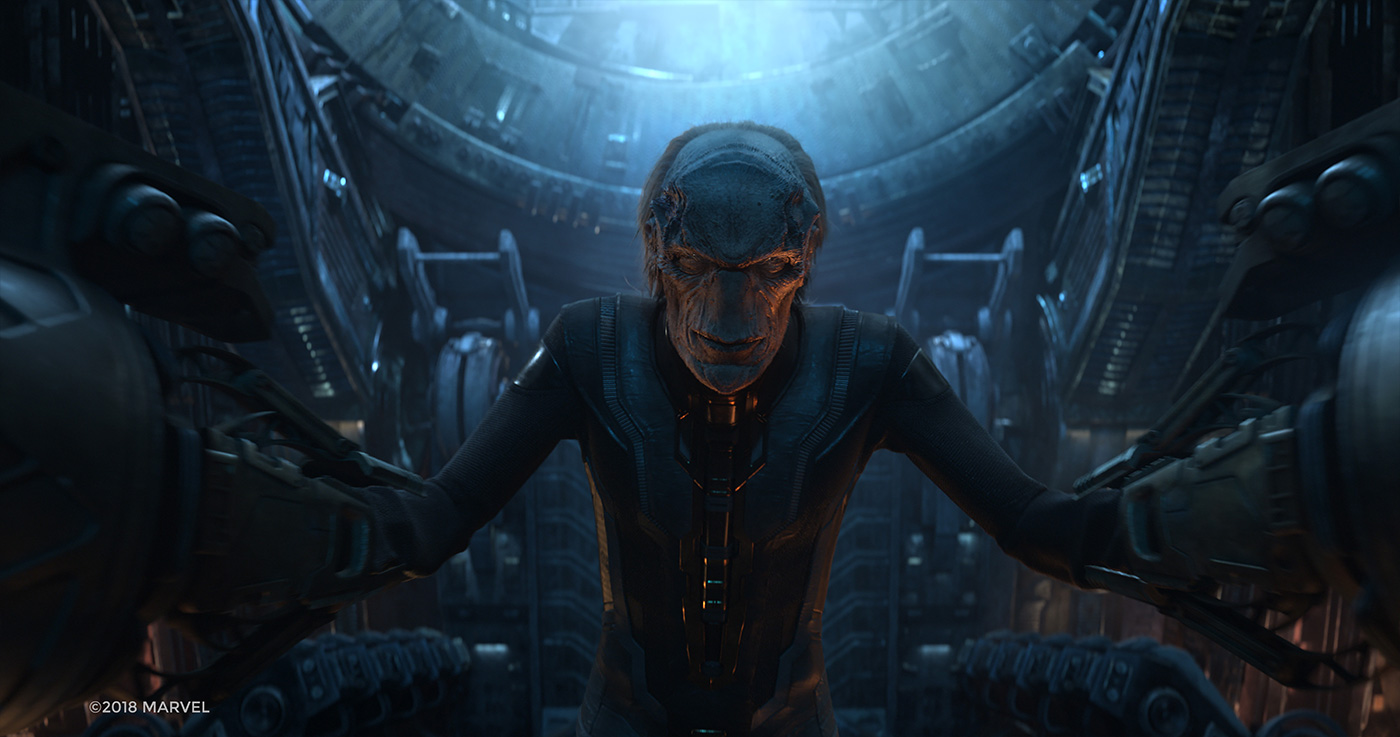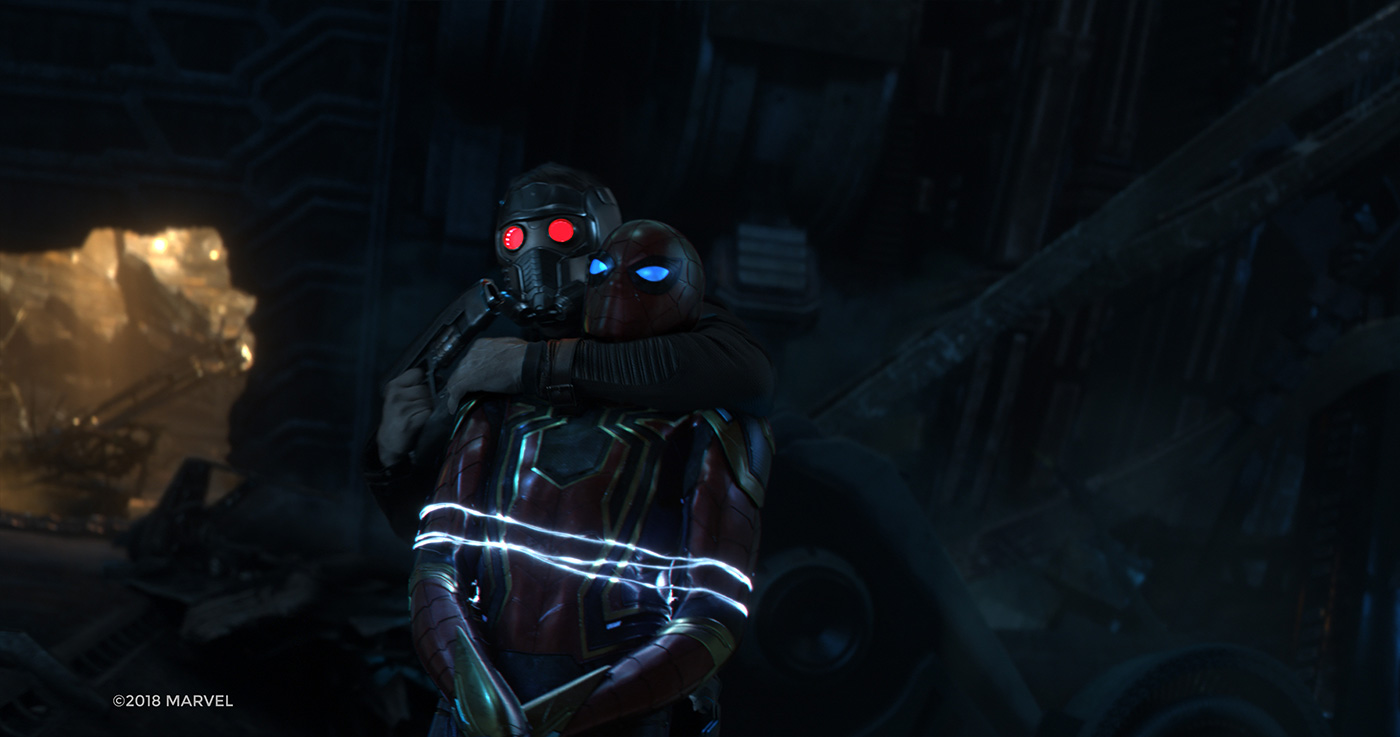In 2016, Andrew Morley explained the work of Cinesite on FANTASTIC BEASTS AND WHERE TO FIND THEM. He talks to us today about his work on AVENGERS: INFINITY WAR.
How did you get involved on this show?
Cinesite has a long history of working for Marvel Studios, to date we have worked on IRON MAN 3, ANT-MAN, CAPTAIN AMERICA: CIVIL WAR and now AVENGERS INFINITY WAR. Our Montreal crew is also currently working on ANT-MAN & THE WASP so the team were confident in our ability to deliver the quality and style the Russo brothers were striving for in this film.
How does it feel to be part of the MCU?
Doing work in the Marvel universe is a ton of fun. It was a great show to supervise, particularly because myself and the team were able to bring some key comic book moments in to life on the big screen such as Ebony Maw’s torture of Doctor Strange. Being part of the MCU production family was a great experience, everyone had so much ambition and knowledge when it came to the VFX, which is clear to see in the film.
How was this new collaboration with directors Russo Brothers and VFX Supervisor Dan DeLeeuw?
We worked mostly with VFX Co-Supervisor Mårten Larsson and VFX Producers Lisa Marra and Jen Underdahl, they were always supportive in our reviews and when relaying notes from Dan and the Russo brothers. Towards the end of the production Mårten, Lisa & Jen spent some time in our studio, it was great to work in close quarters and in such a collaborate way.
How did you organize the work with your VFX Producer?
Lara Lom was the VFX producer for the show. We had a great working relationship. We hadn’t worked together before but we trusted each other and we looked out for each other’s interests. We tackled the larger dev items first and, where possible, seeked approval on the look of our assets and characters before all plates were turned over. Trailer shots that were completed early on were extremely beneficial to the development of our sequences, allowing us to test and experiment and receive key feedback to guide the look of our remaining work.
How did you split the work amongst the Cinesite offices?
Cinesite London completed the bulk of the work, I worked alongside CG Supervisor Chris Petts, Comp Supervisor Helen Newby and Sequence Supervisors Rob Andrews & Aleksandar Pejic to name a few but there were so many talented artists working on this show. The London crew also had support from animators based in our Montreal location with Animation Supervisor Eamonn Butler overseeing their workload on the Doctor Strange cloak.
What are the sequences made by Cinesite?
Our initial main award was the torture sequence of Doctor Strange by the sinister Black Order general Ebony Maw, taking place on the flight deck of the Q-ship. The other main award, was the Guardians breaking into the flight deck to attack the Avengers. This is the first time the two teams meet, so it’s a very key scene and a fun one to be involved in. Although Cinesite’s award was just over 200 shots it was very complex work, from character animation to fully CG shots, all taking place within two versions of the same environment – Q-ship unbroken and a damaged version, having crashed on Titan.
Can you explain in detail about the design and creation of Iron Man and Spider-Man?
Iron Man and Iron Spider were shared assets with other vendors. In our sequences, we adjusted and developed the look, colour, and texture of Iron Man and Iron Spider to fit in the dark and moody post-crash environment. One challenge was to maintain the red iconic suit characteristic of both characters within this cold / blue environment while maintaining realism.
How did you handle the challenges of the lighting with their reflective armoured suits?
Lighting the superheroes proved quite tricky as the reflective qualities of their suits meant that the CG environment had to be included as an indirect reflection in many shots where the characters interacted or travelled through space. We couldn’t get a nice result by simply using static HDRI dome lights.
Another challenge that we quickly realised was that we weren’t able to re-use the same lighting setup for similar shots once the camera or characters had been just slightly oriented in a different position. Given the reflective nature of their suits and based on the angle of reflectance, a light which might have looked good from one angle just didn’t work at all when it was oriented just a few degrees off from its original position.
We also had to deal with the fact that highly reflective materials show the origin of each light, e.g. a spot light will have a round shape when reflected and an area light will show up as a bright rectangle. This broke the immersion and natural look of the scene which forced the team to use textured lights (gobos) for almost every light, or place them behind objects so they wouldn’t stand out. It was even more challenging when the characters on screen were moving around and travelling through space.
The heroes were also lit and shaded independently by several vendors which meant that maintaining a consistent look throughout shots proved to be challenging as well throughout the show.
Can you tell us more about their face animation?
This film features a new nanotech suit for Iron Man, which has the ability to form and grow organically over his body. Cinesite developed several “Bleeding Edge” weapons that needed to share the characteristic-look and behaviour of the new suit. The nanotechnology enabled a weapon to form at any point on the surface of the suit. In the final fight scene, only the heads of Robert Downey Jr. and Tom Holland were live-action – their bodies in the “Bleeding Edge” suits were fully CG. There was a huge amount of work for that, both in rotomation and in blending the neck of the suit into the live-action characters.
Iron Spider has mechanical legs. How did you create and animate them?
Cinesite’s shots introduced Iron Spider’s “Waldoes” (powered, exoskeleton spider legs) for the first time. Our animators were eager to create iconic Iron Spider poses, which would reference the character’s comic book history.
Let’s talk about the bad guy, Ebony Maw. How did you design and create him?
We received Ebony Maw artwork and a high-res digital sculpt, from which the team rebuilt the character to suit our pipeline. It had to be an animation-friendly character so we designed the model and rig to be able to accept all the facial capture gathered on the shoot. Whilst also taking care to visually match it with reference to other facilities, as well as shots from other vendors. Tom Vaughan-Lawlor wore a full head camera (duel cam/ head camera) on set, which allowed us to capture his performance using the facial capture technology. Tom is around 5ft 9 and Maw was 7ft 2; we needed to allow for that and so we played around a lot with his stride length and proportions to get them to sit right. Tom’s strong performance was our guide as to how the character moved, we stayed as true to his performance as possible. Still, doing a full-screen Ebony Maw was quite the challenge. His head literally fills the whole screen in some cases so there’s nowhere to hide! We had to throw everything we had at it, to do the character justice and achieve these hero shots.
How did you manage his hair, skin tone and texture?
We received skin tone, hair guides and artwork to match the skin tone, hair groom and hair simulation to. After rebuilding and matching the look of the groom with Yeti and Cinesite’s proprietary tools we built a hair simulation setup in SideFx Houdini to transfer the motion of wind and the weight of the hair onto the full resolution hair for rendering. For fine detail work we used Cinesite’s proprietary fur tools to create facial hair, eye brows and eye lashes. These were all output to our lighting team where we rendered the hair in SolidAngle Arnold Renderer.
Can you tell us more about the death of Ebony Maw?
The death of Ebony Maw changed substantially during production and ultimately resulted in the character getting sucked out of the flight deck. This gave the pace of the action more variety and kept the narrative compelling. Our friends at Weta Digital handled the shot of Ebony Maw outside out the Q-ship.
The Q-Ship is a massive ship. How did you create it and its interiors?
Cinesite only delivered the interior shots within the Q-ship, for which production had built partial interior sets. The design of the flight deck came from the art department. They built the main walkway area physically on stage in Atlanta, it was a highly detailed but small section of set. The style, design and texture allowed us to res up the low resolution previs geometry we were given, to create the full CG version.
Initially we approached the massive CG interior set extension with conceptual artwork provided by Charlie Wood’s team and the Marvel art department. We also got geometry that had been used in the previs. There were instances where we replaced sections of the live action built set with full CG geometry mainly because it was more efficient to replace it in its entirety, or a more damaged version of the flight deck was required to sync with the progression of the fight sequence. During this process, we built the Q-ship interior in a modular way to accommodate any changes that might be made.
Can you tell us more about the UI work of the Q-Ship?
The nodule screen was a key element to the overall flight deck interior design, it was a great to develop but more complex than we had anticipated due to the fact it was not defined as literally as other aspects of the environment. It was a highly conceptual fluid motion based “screen” designed to show the environment outside of the Q-ship. Finessing this level of detail was highly time consuming and challenging. It required a heavy Houdini set up which went through various stages of lighting and extreme compositing set up to tie the design together.
How did you create the damaged version of the Q-Ship?
Cinesite created the interior destruction, as well as a subsequent scene in which the Guardians – Peter Quill (Chris Pratt), Drax and Mantis — board the crashed ship and, thinking the Avengers are enemies, engage them in combat. For the fight between the Guardians and the Avengers we did many fully-CG shots of Iron Man chasing Quill through the air, a lot of Quill fighting with blasters, Mantis trying to entrance Spidey, Spidey fighting back with his webs, and Doctor Strange fighting off daggers being thrown by Drax.
Which sequence or shot was the most complicated to create and why?
Ebony Maw presented us with the greatest challenge. He’s a very reserved but powerful character which is a challenging combination to visually represent. Due to our Maw shots, often being seen in extreme close up a lot of work went into his subtle facial movements and the subsequent texture and lighting that coincides with this these finer details.
What is your favourite shot or sequence?
I’m really proud of all of Cinesite’s work on this film. If I had to pick one shot, it would probably be the full screen Ebony Maw. It was great to bring this comic torture scene to life for the fans. I think we captured Maw’s sinister determination in the close up.
What is your best memory on this show?
When you work so intensively on something, a feeling of camaraderie grows in the team, regardless the pressure. That’s what I’ll remember.
How long have you worked on this show & what was the size of your team?
Just over a year. Cinesite’s crew began work on AVENGERS INFINITY WAR back in March 2017, myself and Matchmove Lead, Arron Turnbull visited set on three occasions to observe the filming and gather reference material required for our sequences. At the peak of production, we had 143 artists working on the show which we delivered in April 2018. Everyone gave it their all, it was great to see the film together at our crew screening in London a few weeks ago.
What’s the VFX shots count?
Our final count was 215 shots, it was very complex work, from character animation to fully CG shots, all taking place within two versions of the same environment.
A big thanks for your time.
// WANT TO KNOW MORE?
Cinesite: Dedicated page about AVENGERS: INFINITY WAR on Cinesite website.
© Vincent Frei – The Art of VFX – 2018


